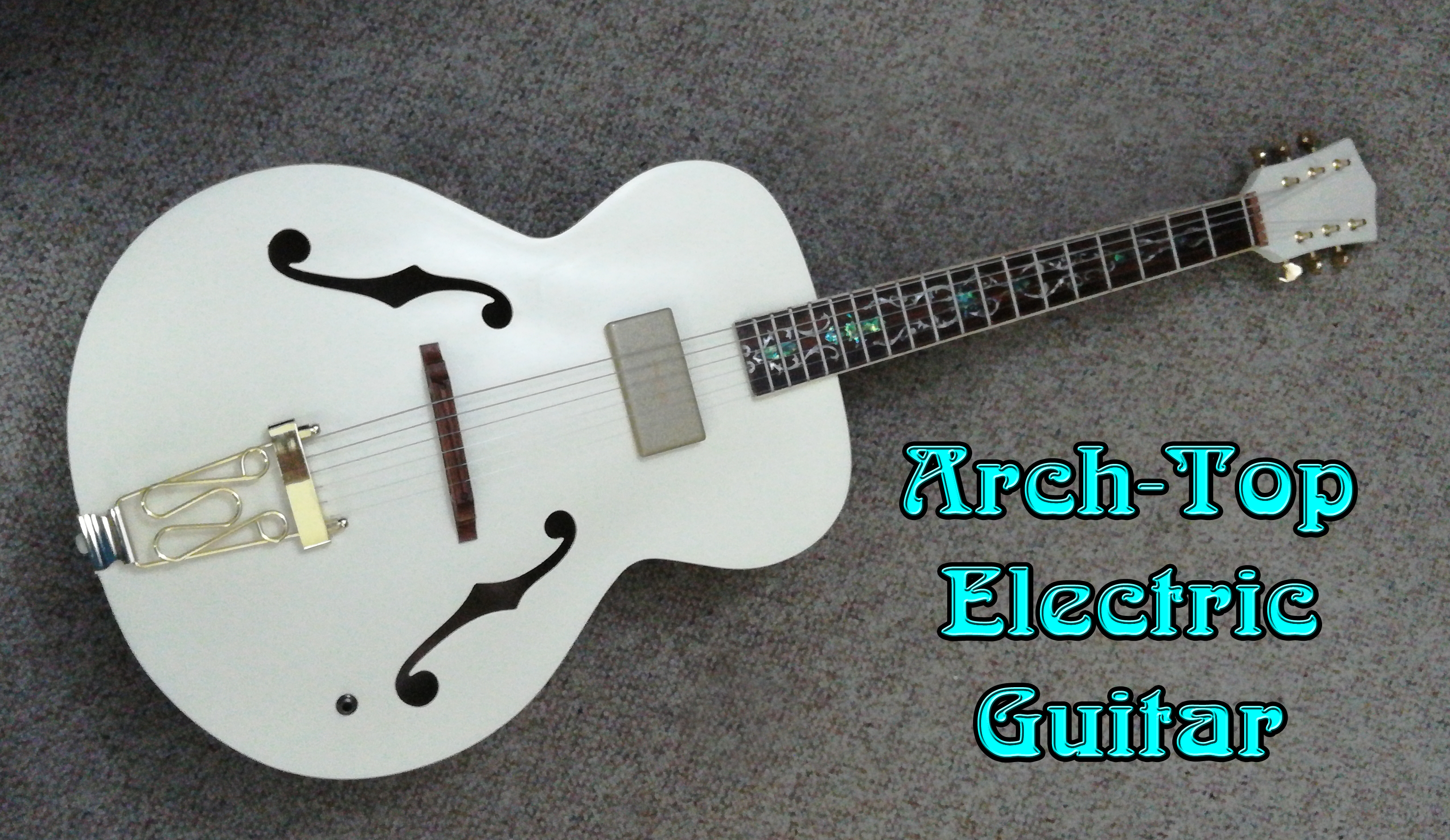|
This article is a basic "think about it" commentary. I do not herein propose industry wide change. It's just food for thought... and explanation of some of my latest projects.
MY ZERO-KNOB GUITAR
I built an electric guitar for myself that has no control knobs... straight pickup to jack. Let me explain why.

IT'S NOT REALLY WHAT THEY DO
As guitar builders know, volume and tone knobs are potentiometers. There are different potentiometers: 250k, 500k, 1M, Type A and B. But in the end game they differ not in tone itself, but tone potential and in the way they produce it. A 500k pot contains all the sound potential of a 250k pot but allows more treble. An A or B pot either one produces the same sound output... just at different speeds of getting there.
But what's more interesting is that a volume pot really isn't a volume pot: It's a "tone cutter". It starts by cutting out the high tones, then cuts out mid tones, and then on the low end cuts all tones completely. It seems to be a volume pot because it does indeed reduce audible sound. But it does so by simply grounding out specific ranges of sound, starting with the high tones until it cuts out all the tones completely.
The downside to this: if you use your guitar volume knob to turn down volume slightly, you're in reality cutting out part of the guitar's treble range. Is that really what you're wanting to do?
A tone pot does change the sound coming out of a guitar... but in most instances it tends to muffle sound rather than accurately change its tone.
Do you really want to "muffle" your guitar?
Don't get me wrong; there's nothing wrong with volume and tone knobs. They're used industry-wide and people like them. They do offer utility and convenience and sometimes you can get the exact sound you want by using guitar controls. But that doesn't mean they're absolutely required. They are not essential to producing good sound... nor are they even the best way of doing so.
PROVE IT TO YOURSELF
Adjust the volume and tone knobs on your guitar to different levels. Listen to the results. Then crank all your guitar knobs to "10" (full pickup output mode) and change the volume and tone at your amplifier. Chances are you will notice a significant difference, with the amplifier alterations sounding much better.
Why is this? Because a good amplifier has circuitry built in to adjust volume and tone properly, beyond the basic capabilities of a simple potentiometer.
So this leads us to ask: Which is better, to adjust volume and tone at the guitar, or at the amp? If the amp does it better... why not use the amp?
This concept is why professional musicians often use equalizer boards, pedals and sound boxes. It's why amps have all those fancy settings in the first place.
The truth is, many professional guitar players crank both volume and tone knobs to "full 10" setting and then adjust output at their amp. (Alternately, some use their control knobs only for "special effects"... such as using the volume knob to create a slow warble or vibrato.) Bottom line: these knobs can be useful, but they're not "absolutely necessary".
Think about it this way: if a guitar volume and tone knob were sufficient, why would an amplifier need such? Why wouldn't the amp have no knobs, and just let the player control it all from the guitar?
OUTPUTTING PURE SIGNAL
Wishbringer FlatCat™ pickups produce beautiful sound when wired straight to the jack. This is the case with many quality pickups... but commonly beginning guitar players aren't aware of this because they never give them the chance to do so. Many players are under the impression that volume and tone controls on the guitar are essential to getting the "perfect sound". In reality the opposite is true; you will achieve the most precise, accurate sound by bypassing all controls entirely, sending the pickup signal straight to the amp without any controls interfering with or altering the sound in anyway. (Even 500k knobs take out significant top end treble from a pickup signal.)
By sending pure signal to the amplifier, with no potentiometers getting in the way, no pots to go bad, no interference with the current and no potential grounding issues... straight-to-jack can also help reduce potential "hum" problems, especially if you use shielded or twisted-pair wire. The fewer the connections, the cleaner the sound.
A WONDROUS NO-KNOB ELECTRIC GUITAR
The guitar I recently major-modded is an old archtop which was unplayable. The surface looked terrible. I spent a few months on it, taking it down to bare wood, re-gluing where needed, re-finishing in ivory white, replaced the fretboard with a mother-of-pearl inlay board, and then replaced all the hardware with gold-tone to make it pretty. For the electronics I used a FlatCat™ pickup near the neck. I wanted the purest, richest sound I could get to go to the amp, so I ran the FlatCat straight to the jack. I can adjust volume and tone at the amp with better results, with no potential distortion from basic pots.
The resulting sound is awesome, undistorted, clean as it can be, "Delta Swamp" with incredible acoustic overtones. There are no unsightly knobs to get in the way of playing. Quite a bit less wiring involved as well, with zero hum or noise. And I can get any tone I want out of it by adjusting my amplifier.
Just something to think about. It's an unusual idea, but with sound reasoning behind it. One might be surprised how many musicians "bypass" their guitar controls by cranking them full-on "ten" and letting the amp do its job. Bypassing controls might work for your project as well.
--o--
|